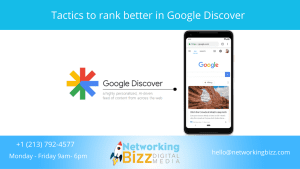1. Stop the scroll
 This goal is clear. Facebook autoplaying the audio as well as the video when a user opens their news feed provides a huge opportunity, but it’s only an opportunity. It’s not a guarantee of anything because while you can easily grab a viewer’s attention, they can just as easily snatch it back. Those first three to 10 seconds are vital, then, especially when the video appears as an ad in a news feed. There are some pretty simple things that you can do to halt the scroll.
This goal is clear. Facebook autoplaying the audio as well as the video when a user opens their news feed provides a huge opportunity, but it’s only an opportunity. It’s not a guarantee of anything because while you can easily grab a viewer’s attention, they can just as easily snatch it back. Those first three to 10 seconds are vital, then, especially when the video appears as an ad in a news feed. There are some pretty simple things that you can do to halt the scroll.
One strategy that we use is blatant hand motions. It’s a direct appeal, and it can be a bit annoying, but it does still work. Give the viewer a wave. Pull them toward you in the same way that a good store demonstrator will pull passers-by into their display. Attract attention before the crowd scrolls past. It’s not subtle but sometimes, simple and bold are enough to do the job.
Another strategy that we’ve found to be very effective is text overlay. Facebook now allows advertisers to automatically add subtitles to their video ads. If people have turned the sound off on their phone, they’ll still be able to see your message. As soon as they see the text, they’ll start to read it. It pulls them in and draws their attention. You’ll be able to prove that you’ve got something they should see before their thumb starts to move.
The third thing to do is use a “pattern-interrupt.” That just means we try to break up the visuals. It’s the same principle that makes warning signs red and pedestrian crossings black and white. If you can break up the picture so that it looks unusual, it will always attract attention.
You don’t have to do anything outrageous here. Movement can be enough to keep eyeballs on that part of the screen. A very close close-up can be unusual enough to break the routine and make the video stand out against the background of other content. Video ads that look like selfies can create pattern interrupt, too, and they look authentic and real.
2. Use the EDIE formula
 Once we’ve settled on a way to grab attention in the opening seconds, we apply our EDIE formula. EDIE stands for Educate, Demonstrate, Inform, or Entertain.
Once we’ve settled on a way to grab attention in the opening seconds, we apply our EDIE formula. EDIE stands for Educate, Demonstrate, Inform, or Entertain.
Educate
The Educate approach is about giving people tips. You don’t have to be on camera to educate — you can do a Power Point or Keynote presentation while recording your computer screen, and you have a great video. If you want them to register for a webinar, you can tell them they’ll find more once they complete your call to action. If you give them value, they’ll share it. If you give them at least one “Aha!” moment, one nugget of advice that makes them realize the value of what you’re offering, they’ll obey that call to action.
Demonstrate
Demonstrate works great for technology brands. We all love to see gadgets, and we love to see them work. Video ads for drones and software and other tech items are always eye-catching. You only need to show the product in action to make the viewer want to see more and want to get their own hands on the product.
Inform
Inform goes further than Educate. Instead of delivering a skill to the viewer, it gives them information they didn’t know before. It’s particularly useful when the product requires little education to use but has a variety of features that people should know about.
3. Call to action
 We find that many clients forget about the call to action. Once you’ve built up interest, you should tell viewers what to do next. Whether your call to action is loud or subtle, urgent or calm, it should suit your brand, your product, and the action you want viewers to take. But, it should be there — and it might even need to be there several times.
We find that many clients forget about the call to action. Once you’ve built up interest, you should tell viewers what to do next. Whether your call to action is loud or subtle, urgent or calm, it should suit your brand, your product, and the action you want viewers to take. But, it should be there — and it might even need to be there several times.
Sometimes brands will make a video ad that lasts five or six minutes, but they won’t give a call to action until the very end. It’s as though they’re embarrassed to guide viewers in the direction they want them to go. They’re afraid that if they include a call to action earlier, they’ll put people off watching.
But, only a portion of the audience will watch a video all the way through. So only a portion of the audience will see a call to action that comes at the end of a long video.
In a nine-minute video I might make about four calls to action. They won’t necessarily be hard sales — they’ll be natural and authentic. But, the clearer you can lay out the path, the more likely people are to follow it.

